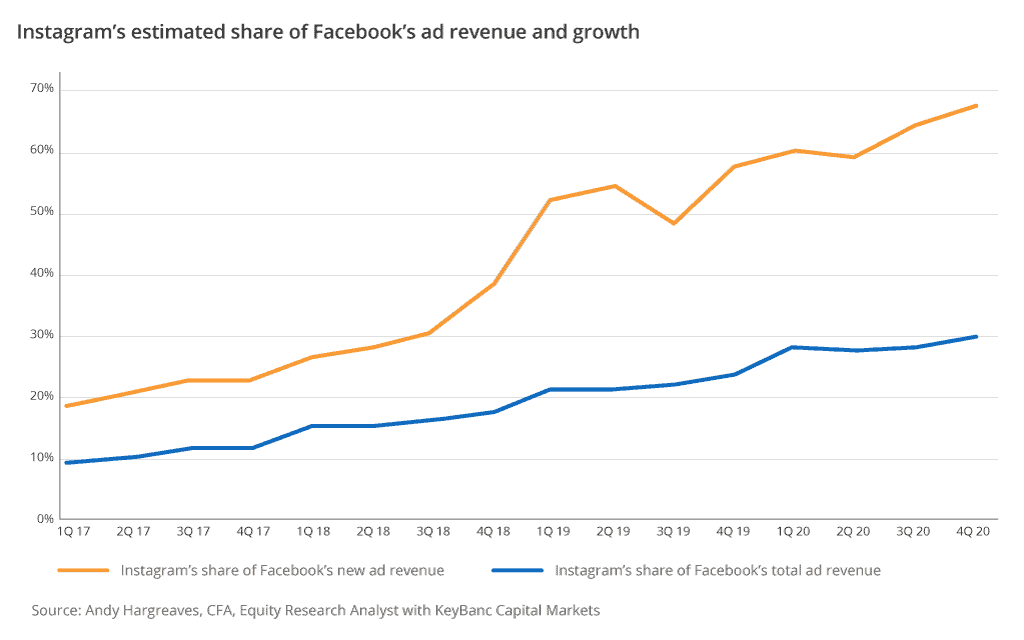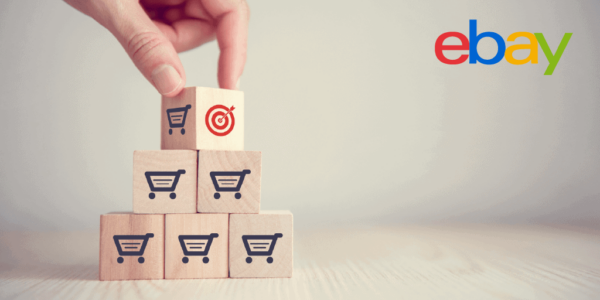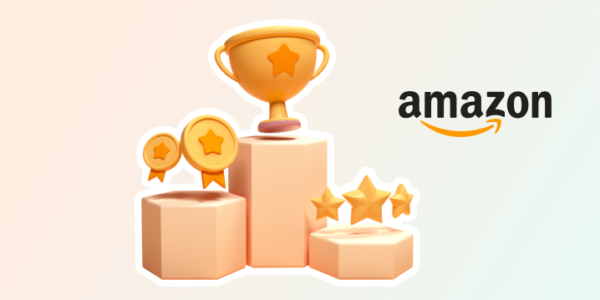
How to use Instagram for ecommerce: guide for online sellers
This article will help marketplace and ecommerce sellers use Instagram to grow their online sales.
Instagram is the 2nd most logged in social media site for daily use after Facebook. With over 2.3 billion active users and its user base projected to grow, Instagram is also considered one of the best social sales tools in 2020 and beyond.
In this article you’ll learn about:
- How establishing presence & social selling on Instagram can support selling on marketplaces
- Top 20 Instagram stats about Instagram usage, shopper engagement and purchasing online
- Top 10 Instagram ecommerce tips for boosting engagement & purchases on the platform
- Instagram Shop & Instagram Checkout.
Ecommerce on social media
Social networking sites provide good channels to market your products to your followers. The most popular social networks worldwide include Facebook, YouTube, WhatsApp, WeChat and Instagram. Depending on the type of your business, some platforms may work better than others.
Talking about ecommerce on social media, there’s a difference between social selling, using paid ads and actually using a platform as a marketplace.
Social selling
Social selling is about converting followers into customers. It’s about building relationships and credibility naturally by getting to know your prospects, e.g. by asking them engaging questions, answering their questions and responding to comments and complaints.
Social selling attracts 45% more business opportunities. It’s a cost-effective way to capture relevant traffic as it targets social media where customers spend plenty of their time.
Selling on social media marketplaces
Selling on social media marketplaces means using the platform’s selling capabilities to actively market products. Social shopping, in turn, refers to any purchase through social platforms, for example in social media apps, communities, social marketplaces or resulting from suggestions made by recommendation algorithms.
Examples of social selling/shopping: any features in social networking apps that allow marketplaces to sell goods directly in the app without the user leaving it, such as Facebook’s built-in shopping feature, Instagram’s internal checkout feature or Shoppable Instagram Posts (businesses can tag brands and products in their organic Instagram posts).
According to Caroline Ohrn, Product Director at Webinterpret, today shoppers want a simpler route to their favorite products. However, many ecommerce purchase journeys are too complex, relying on redirects from one platform to another and/or requiring multiple steps.
Social shopping addresses the problem of a long and slow redirecting process that makes many shoppers exit the window before reaching the checkout.
Using paid ads
Ecommerce advertising is on the rise and social networking sites, such as Instagram, are part of that online sales trend. Running paid ads on social platforms helps to significantly grow traffic to a website or an account page and maximize sales conversions.
By the end of 2020, Instagram is projected to have a significant share of Facebook’s overall ad revenue. Due to increased engagement with Stories, compared to Facebook, ad spending on Instagram is 23% higher. There are some good growth opportunities available for advertisers on Stories.
Top 20 Instagram ecommerce stats
Instagram presents plenty of sales opportunities to (international) ecommerce sellers.
First, Instagram boasts a global user audience. The highest concentration of users is in the US (116 million users), followed by India (73 million) and Brazil (72 million). Instagram users in the USA are projected to reach 125.5 million active users by 2023.
Second, according to Shopify, Instagram users spend more per purchase than those of other platforms like Facebook, LinkedIn or Pinterest. Additionally, many users report making a purchase decision based on something that they saw while browsing Instagram.
Top 20 Instagram usage & ecommerce stats
- 2.3 billion monthly active Instagram users.
- 71% of the billion Instagram users are under the age of 35 (Statista, 2019).
- Over 500 million Instagram users use the platform daily.
- 200 million visit a business profile daily.
- About 6 in 10 Instagram users log in at least once daily.
- 21% of users log in weekly and 16% log in less often than that.
- Instagram users spend an average of 53 minutes per day on the platform (vs. Facebook users’ 58 minutes per day).
- Over 500 million accounts use Instagram Stories every day (Instagram, 2018).
- 1/3 of the most viewed Instagram stories are from businesses.
- 90% of accounts follow at least one business on Instagram.
- 71% of US businesses use Instagram; 7 out of 10 hashtags on Instagram are branded (Mention, 2018).
- There is an average of 10.7 hashtags per Instagram post (HubSpot, 2020).
- Posts with geotags are reported to get 79% more engagement.
- Instagram helps 80% Instagram users make purchase decisions (Facebook, 2019).
- Over 80% of Instagram users discover new products/services on the platform.
- After seeing a product/service on Instagram, 79% search for more information, 37% visit the retail store and 46% make a purchase.
- Over 80% of businesses consider Instagram engagement to be the most important metric.
- The use of the #ad hashtag on Instagram increased by 133% from February 2018 to February 2019 (Socialbakers, 2019).
- Instagram engagement increased by 29% for brands between October 2017 and May 2018 (Socialbakers, 2018).
- Brands can generate over 4 x more interactions on Instagram compared to Facebook.
Top 10 Instagram ecommerce tips
The following Instagram ecommerce tips will help you increase user engagement and sales opportunities on Instagram.
#1 Instagram ecommerce tip: take care of your content
There is no rule for the volume of content on Instagram, but good quality and consistency are key. Hence, post high-quality and engaging content for your followers. To do it consistently, consider automating the process with a scheduling app.
To rise above the noise, stand out by having a unique tone, voice and style. As Instagram users are mostly younger than Facebook users, a casual vibe may work best. If you offer discounts, announce them visually, with attractive, unique graphics and clear text overlays.
#2 Instagram ecommerce tip: take care of your photos
Too many product photos in your feed may appear too salesy. Too many similar photos posted one after another won’t make a good impression, either. For this reason, don’t hesitate to get creative, e.g. by showing the lifestyle and culture around your products. You can also build positive associations with your brand/products, e.g. by associating sports shoes with a healthy lifestyle and/or educating your followers.
To build emotional connection with your target audience, you can post behind-the-scenes photos of your products or share exclusive footage/photos from live events.
Take the Instagram feed of Megan of Peppermintpine as an example: she regularly shares personal photos showing the progress of her knitwear/crochet products.
The recommended image size for Instagram photos is 1080 x 1080 pixels.
#3 Instagram ecommerce tip: take care of your hashtags
Use hashtags relevant to your products as a search-optimization technique. However, although each post can include up to 30 hashtags, studies have shown that it’s not about “the more the better”.
Types of hashtags:
- Geotags include a city or locale; useful for brick-and-mortar stores to help consumers find directions, hours, etc.
- Branded tags: specific to your product, name or slogan; all of your posts will come up when Instagram users click that hashtag.
- Niche tags: super focused with fewer searches.
You can add bulky tags, such as geotags and niche tags, in the first comment of your post. Check out the example below: relevant hashtags help to expand the reach.
The bottom line: you may want to go for something more unique and has been used less than 1 million times.
#4 Instagram ecommerce tip: optimize your company’s name
As names are a searchable field on Instagram, optimize your company’s name and add keywords to your name and bio.
For example, try searching for “tools” on Instagram: you’ll get tool-related results/accounts. Thus, it’s worth including the word “tools” in the company’s name or adding this keyword in the profile.
#5 Instagram ecommerce tip: share user-generated content
Buyers trust social proof as much as they trust personal recommendations. Studies show that 87% of the time social proof is checked to learn the opinions of others about the product. Buyers are more likely to choose products with positive feedback than ones with low ratings and negative reviews.
That’s why many businesses use platforms like Instagram to share user-generated content, e.g. by asking customers for product reviews or sharing photos/videos featuring real buyers using products (with branded hashtags). Then they can reshare such posts on their profiles and mention their customers.
This is a great way to build a community, expand reach, establish trust for the brand, improve customer loyalty and drive more sales.
Creating an engaged community with plenty of user-generated content is important. By posting content created by your users, you cultivate an approachable, down-to-earth and human brand image.
#6 Instagram ecommerce tip: consider your customers & prospects
First, don’t hesitate to like posts of your customers. 65% of customers said that they would be honored if a brand liked their post (Iconosquare study).
Second, run contests and give away exclusive coupons. 70% of Instagram users had entered a photo contest or competition at some point (Iconosquare study).
Third, consider taking a stand on social and political issues as a way of strengthening your brand’s image. 70% of consumers want brands to take a stand on social issues. 66% want brands to take a stand on social media as they believe that brands can create real change.
However, bear in mind that taking a stand may be risky so give it some thoughtful consideration. By no means make it random: your stand should relate to your brand’s values and a good cause.
#7 Instagram ecommerce tip: recruit influencers
Consumers will trust an individual’s recommendation over yours so engage influencers to help you spread the good word about your products. Posts by influencers with a larger following are likely to have more views.
According to surveyed marketers, 89% reported that Instagram was the most important social media channel for influencer marketing.
The top three industries working with Instagram influencers include 91% of luxury brands, 84% of sports clothing and 83% of beauty brands.
#8 Instagram ecommerce tip: stay efficient
Managing all Instagram publications in-app can be problematic, especially if your audience is most active outside your working hours. Further, regularly logging into your Instagram account may take up a lot of your time.
All the same, consistent content publications and the time of day that Instagram users are most active matter. To increase your efficiency, consider using social media marketing automation tools, e.g. you can preload and schedule a month’s worth of content.
Finally, remember to engage with your followers and respond to comments. Don’t wait for new notifications to pop up, but build a system and allocate time efficiently to respond to your audience.
#9 Instagram ecommerce tip: measure your Instagram ecommerce success
Instagram is a visual-content-based platform, which explains why it has such high engagement. To check how your Instagram posts and Stories are performing, go to your Instagram business account and the Insights tab.
Access to Instagram Analytics gives you data about impressions, reach per post, purchases, information about your demographic or the type of content your audience likes the most. This will give you indication of what types of posts and products are popular with your audience, what is worth promoting more often and what kind of inventory is worth stocking up on.
You can also learn more about people interacting with your posts and/or following you, e.g. gender, age range, geographical details. The data about when users are most active (which days of the week/what time) will help you choose the optimal time for scheduling your posts. Furthermore, if you run Instagram Ads, you can view activity based on reach or impressions.
#10 Instagram ecommerce tip: consider an omnichannel sales strategy for social media
To better connect with your customer base, consider investing in an omnichannel social media sales strategy. In other words, optimize each platform to best serve its users and integrate all of your platforms into a single, seamless approach.
Thus, if you receive a lot of customer enquiries via Twitter, optimize your Twitter strategy to respond to enquiries. If your followers use your Facebook Page to learn more about your business, focus more on educational and engaging content. If people tend to purchase your products on Instagram, optimize your Instagram business profile to sell.
Instagram shop
After checking your eligibility, you can also set up your Instagram ecommerce storefront. You’ll have to ensure:
- Your business is located in a supported market and sells physical goods.
- Your business complies with Instagram’s commerce policies.
- Your Instagram account is set up as a business account and is linked to your Facebook business page.
Then you’ll have to create and connect your catalog (get your Facebook shopping catalog synched up to your Instagram business profile). The next steps involve signing up for Instagram Shopping and tagging your products.
An Instagram Shop removes friction from the purchasing process. It’s easier for shoppers to browse your catalog, check prices or learn more about particular products. They can shop products and proceed to payment without leaving Instagram.
Instagram checkout
Instagram Checkout was first released in 2019 to just a handful of brands in the USA. With the roll-out of Instagram Checkout globally in 2020, shoppers can connect with brands within the app and explore products, including descriptions and prices, with just one click.
This way, purchasing takes just a few clicks and the shopping experience is much faster and more seamless. With fewer steps and improved UX, there’s the increased likelihood that more customers will buy.
Instagram checkout (Sephora example)
In 2020, Sephora announced that it was opening up an Instagram checkout through a digital storefront. Sephora has around 20 million Instagram followers and sells more than 80 brands on Instagram checkout. People can buy products directly from their stories or feed.
Carolyn Bojanowski, Sephora’s senior vice president and general manager of ecommerce, describes the new initiative as:
A seamless, direct and secure way to shop across our brands’ accounts, while still getting the perks of being a Sephora client.
She adds: “Our clients engage with social media in so many ways, like drawing inspiration from the community, getting tips from experts or learning about new beauty trends so we’re always looking for new ways to enhance that beauty journey”.
The timing of this move seems good as the coronavirus pandemic has made consumers cautious about returning to physical stores, especially beauty stores.
Conclusion
On social platforms, such as Instagram, marketplace and ecommerce sellers can engage their satisfied customers, position their products in a real-world setting and grow their sales as a result.
1/3 of all users have bought a product they discovered on Instagram and the global Instagram audience provides sales opportunities around the world.
Thus, consider using Instagram to support your marketplace sales strategy.
For advice on how to grow your domestic & international ecommerce sales on eBay, Amazon and other marketplaces, contact our cross border specialists.

Download our comprehensive guide on eBay Advertising!
Sources
- Digital & Social Selling Facts
- 4 Easy Ways to Generate eCommerce Sales From Instagram
- Important Instagram stats you need to know for 2020
- Advanced Strategies for Selling on Instagram
- Why Instagram is becoming the next big e-commerce platform
- Instagram Ecommerce Integrations You Will Love
- The Small Business Guide to Instagram Ecommerce
- How to Nail Social Media for eCommerce
- The Ultimate Guide to Setting Up an Instagram Shop
- 10 Instagram Stats Every Marketer Should Know in 2020
- 4 Ways to Add Social Proof to Your eCommerce Site
- Social Media Today
- Sephora launches on Instagram checkout with over 80 brands
- Sephora Debuts Social Shopping With Instagram
- Instagram Statistics
Related Posts:
Ecommerce Newsletter
By clicking the “Subscribe now” button, you agree to receive our monthly e-mail newsletter and regular marketing and commercial communications by email from Webinterpret regarding marketing trends and our digital marketing services. You confirm that you have read and agreed to Webinterpret’s Terms of Service and Privacy Policy.












